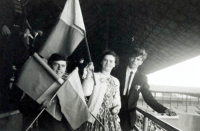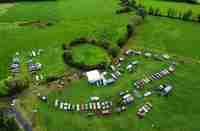War of Independence in Roscommon – and
Connacht Rangers mutiny 100 years ago
By the summer of 1920, the War of Independence had escalated at both local and national level, with ambushes and burnings. The unsavoury behaviour of Black and Tan/Crown forces in Ireland had repercussions that gained an international dimension when it sparked off a mutiny in India, while at home in Roscommon the RIC suffered their first casualty of the war in the county.
In the spring of 1920, the British government had introduced a new force to Ireland. This force was recruited to augment the Royal Irish Constabulary, which at that stage had come under severe pressure because of the retirements and resignations of many of its members and also due to a fall-off in recruitment.
The new force was officially called the RIC Special Reserve, but they were to become known in Ireland as the infamous ‘Black and Tans’. The unusual name for the hastily recruited special reserve came about because its members were attired in a hybrid outfit of dark police uniforms and army khaki.
The Black and Tans were mainly recruited from the thousands of soldiers that were demobilised after the Great War in Europe and were a battle-hardened and quite aggressive group, quickly making a name for themselves for their violence and brutality. For the duration of the troubles the Black and Tans were guilty of many cold-blooded murders in Ireland.
County Roscommon also suffered the wrath of the Black and Tans, as will be recounted in further articles of this series. In July 1920, the RIC was again bolstered by yet another new force known as the Auxiliary Division of the RIC. They were also recruited from ex-British army WW 1 veterans and they were made up of the officer corp. The Auxiliaries (or ‘Auxies’) were a feared force and were noted for their extreme brutality and violence.
Here we will digress a little from the local scene to illustrate how the actions of the Black and Tans had far-reaching effects in far-off places. By the summer of 1920, reports of Black and Tan atrocities in Ireland began to trickle to the outside world.
News of the violence even travelled as far as the Indian Punjab where a British army regiment, the Connacht Rangers, were stationed. The regiment’s members were mostly recruited from counties in the west of Ireland. When news of the brutality at home reached the ears of Irishmen serving in the British army in India, it propelled some of them to action. As a result of hearing of the atrocities back at home, a few members of the regiment organised a protest in India by refusing to obey orders from their superior officers.
On 28th of June 1920, five men from C Company of the first battalion based at Wellington Barracks Jalandhar in the Punjab instigated the protest against martial law in Ireland. The mutiny spread to the city of Solon where the rangers were also stationed. When the authorities at Solon learned of the mutiny they placed all rifles under lock and key in the armoury.
On 1st of July (just one hundred years ago last week) a group of fifty mutineers armed with bayonets attempted to break into the British army weapons store at Solon. The soldier who led the attack was a man called James Joseph Daly who was born in Ballymoe in the parish of St. Croan’s on the Roscommon/Galway border. His family later moved to Westmeath. British troops opened fire on the mutineers, killing two and wounding others. After a few days, outnumbered and overpowered, Daly and his men were forced to surrender.
The protest in India led to the arrest and court-martial of many of the mutineers and harsh sentences being carried out. Fourteen men were sentenced to death, but the only person executed was James Daly, who was considered to be the ringleader of the mutiny. James Daly was executed by firing squad in Dagshai Prison in northern India on the morning of 2nd of November 1920 and his body was buried in the prison yard. He was just a month short of his 21st birthday. Fifty years later, on November 1 1970, Daly’s remains were repatriated from India to Tyrellpass, Co. Westmeath, where his family had settled. Six thousand people attended the funeral and the Tricolour that draped his coffin was the same flag that had draped the coffin of Terence MacSwiney in 1920. After James Daly’s remains were laid to rest, an IRA firing party delivered a final salute by firing a volley of shots over his grave.
Meanwhile, back in Roscommon, the summer months saw an upsurge in activities and the war was moving up a gear. RIC men had come under fire in Kilglass and Curraghroe, but there were no casualties. However, on 12th of July, the first police casualty in County Roscommon occurred when an ambush took place at Moneen Cross about three miles from Ballyleague on the road to Roscommon town. Men of the third Battalion South Roscommon Brigade lay in wait for the two-man bicycle patrol that was approaching from Lanesborough.
The volunteers thought the two police would surrender their weapons without a struggle, but after being called on to halt the RIC men pedalled faster to get away. The attackers fired on them and the result of the clash was one RIC man killed and the other escaping without injury. Rifles and revolvers were captured.
Also during July, volunteers from the third Battalion North Roscommon Brigade decided to burn the courthouse in Strokestown, using petrol and paraffin as combustibles. Petrol at that time was an uncommon substance and the men were not familiar with its use. It was even ordered by IRA headquarters that petrol, due to its highly explosive nature, was not to be used by volunteers in their operations. However, in the Strokestown operation, the floors of the courthouse were saturated with the stuff.
Then someone struck a match prematurely and the entire interior of the building became a fireball. The four men inside tried frantically to escape by exiting the ground floor and scaling the ladder to get to the street outside. They managed to escape the inferno but not without suffering severe burns to their hands and faces. Three of the injured were initially spirited to the Strokestown Infirmary where local doctors attended to them.
Later, two of the men had to be brought to Dublin for skin grafts and over a period of time and with special treatment all of the injured men fully recovered from their burns. Subsequently, one of the courthouse attackers was charged with the arson attack and received a ten-year jail sentence. He was released after the truce.
The month of August saw further attacks on the RIC. The barracks at Loughglynn, which had been occupied by British army and police, was evacuated when they moved to the Castlerea fortress.
An order for the destruction of the building was given to the local volunteers, and as was the common practice, the building was burned on the night after the evacuation. At the end of August volunteers from the fourth Battalion South Roscommon Brigade set up an ambush at Knockcroghery rail crossing. They opened fire on a two-man RIC bicycle patrol that was coming from the Athlone direction, killing one member. The other constable escaped without injury.
More articles later (An Staraí Áitiúil)






